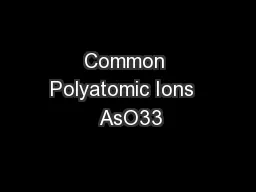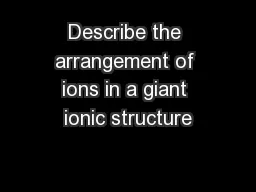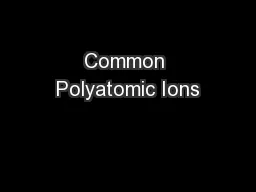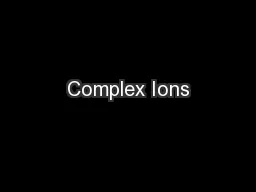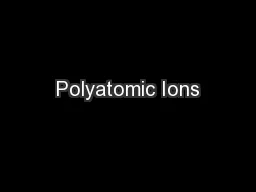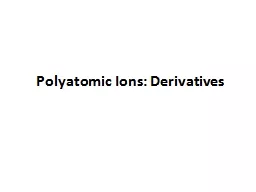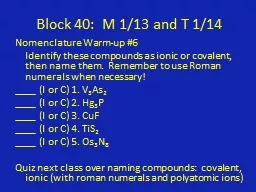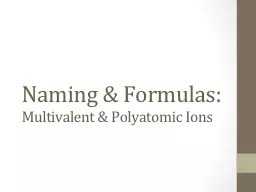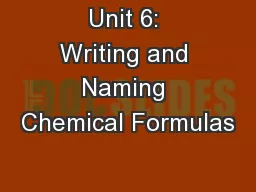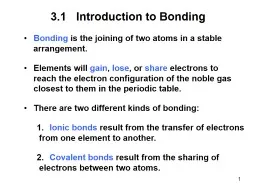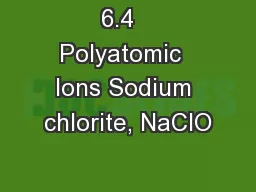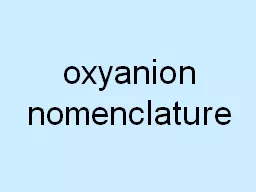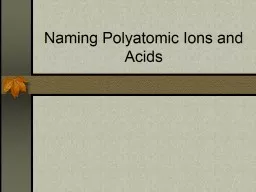PDF-Common Polyatomic Ions AsO33
Author : test | Published Date : 2016-07-11
AsO43 BO33 BrO3 C2H3O2 C2O42 tartrate C7H5O2 ClO ClO2 ClO3 ClO4 CN CO32 Cr2O72 CrO42 dihydrogen phosphite dihydrogen phosphate hydrogen carbonate hydrogen phosphite
Presentation Embed Code
Download Presentation
Download Presentation The PPT/PDF document "Common Polyatomic Ions AsO33" is the property of its rightful owner. Permission is granted to download and print the materials on this website for personal, non-commercial use only, and to display it on your personal computer provided you do not modify the materials and that you retain all copyright notices contained in the materials. By downloading content from our website, you accept the terms of this agreement.
Common Polyatomic Ions AsO33: Transcript
Download Rules Of Document
"Common Polyatomic Ions AsO33"The content belongs to its owner. You may download and print it for personal use, without modification, and keep all copyright notices. By downloading, you agree to these terms.
Related Documents

